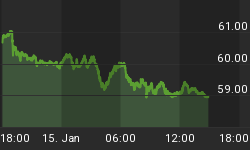Over the past week, I have read several accounts why the market must go up or down, and the authors of these articles typically sight investor sentiment. Either investors are too bearish and this is a bull signal or they are too bullish, which is a bear signal. It is conflicting data, but that is what makesa market.
But the degree of investor sentiment -whether you fall in the bullish or bearish camp -really isn't the problem here, and for the record, our data shows investors to be more bullish than bearish. The problem really has to do with the state of investor sentiment following the 10% drop in the SP500 over the 8 week period from April to June, 2012. Following this period, investors turned bearish but it wasn't to any extreme degree. Furthermore, there was no consensus among the various measures of sentiment that we utilize. For example, the "dumb money" was bearish (i.e., bull signal) while corporate insiders (i.e., the "smart money") were neutral. The Rydex investor, which measures real asset flows, remained bullish. In essence, the sell off did not produce the kinds of extremes in bearish sentiment that we would expect to see at a lasting and durable bottom. Furthermore, the lack of extremes almost guaranteed that the subsequent rally was going to be weak as the "rubber band" was not pulled back tightly at the market bottom. The snap back rally was likely to fail.
Investors have become primed to front run anything that sounds like quantitative easing or bail out. Thus, you can understand why investors weren't really too concerned following the quarter 2 drop in the SP500. Some central banker had their back. It doesn't matter whether investors are bullish or bearish now - although we believe they are still too optimistic -- what matters is the market never really cleared itself of the weak hands during the initial down draft back in April and May. And a market that doesn't cleanse itself periodically is a market built on a weak foundation. As I have been stating for over three months now, this is a market top until proven otherwise
















